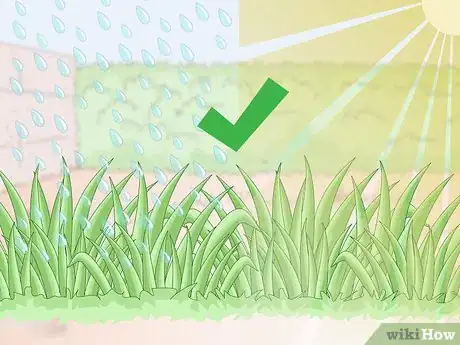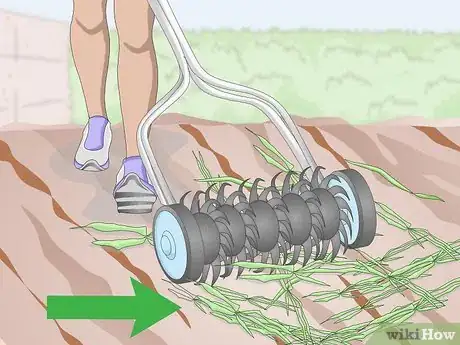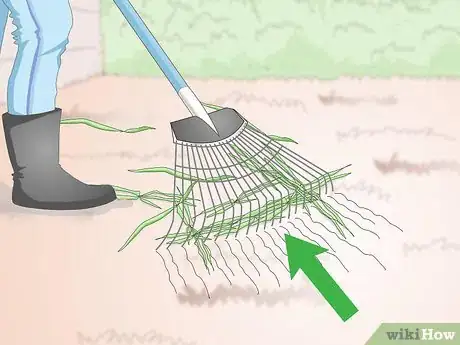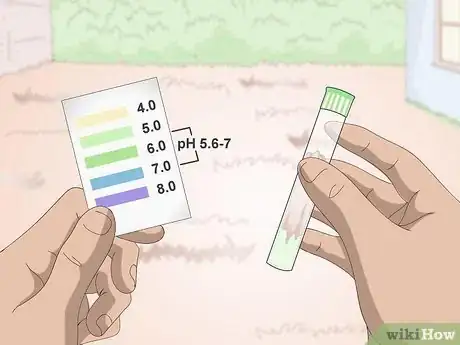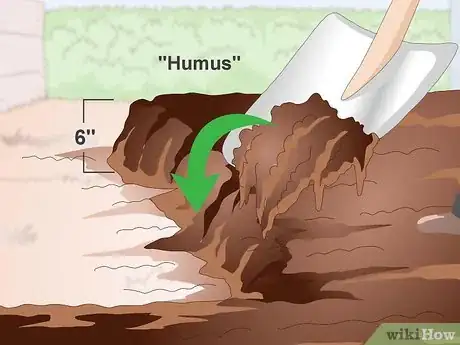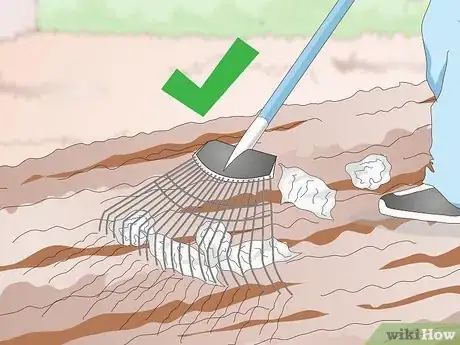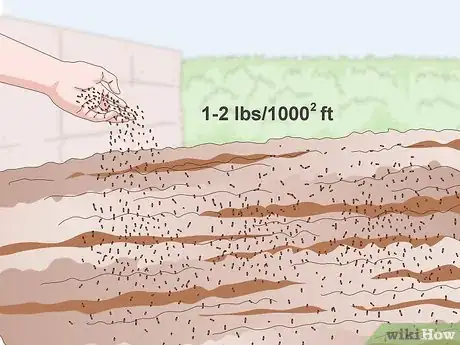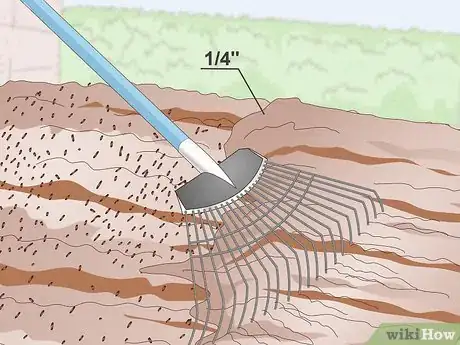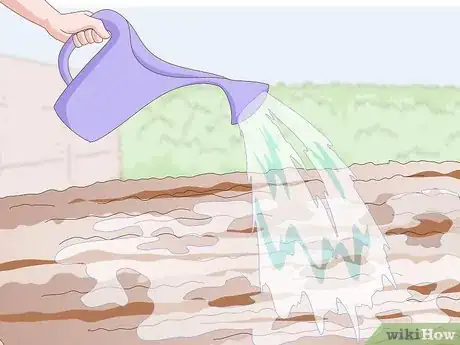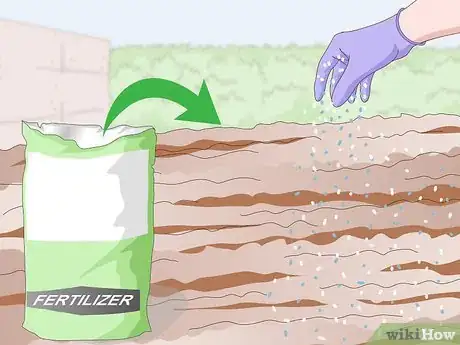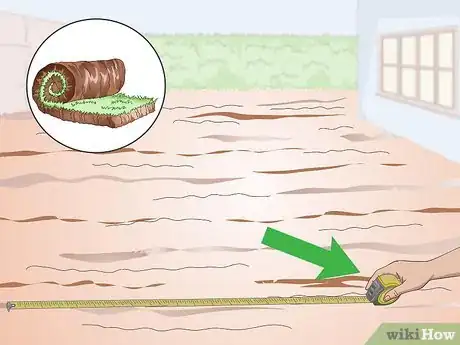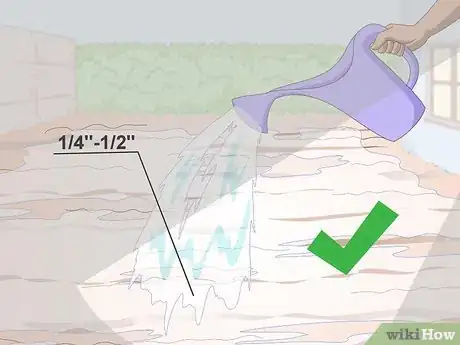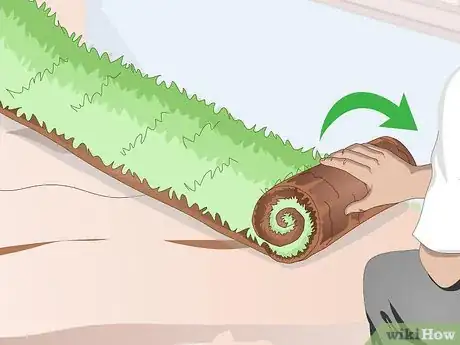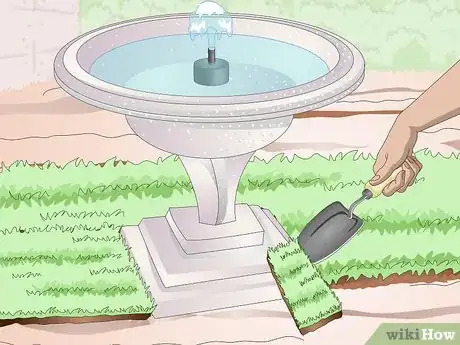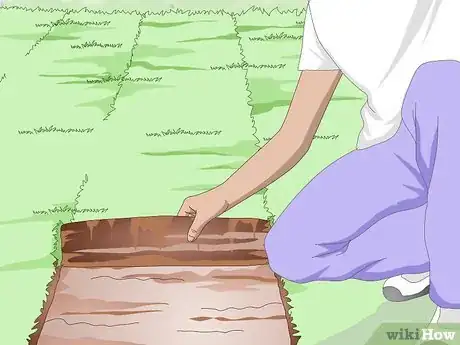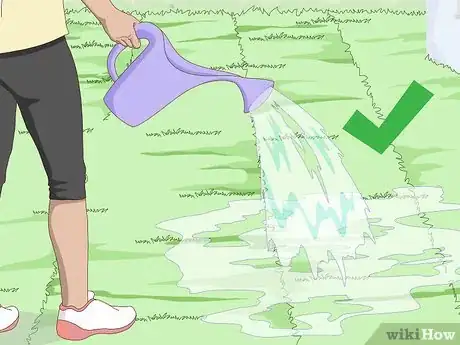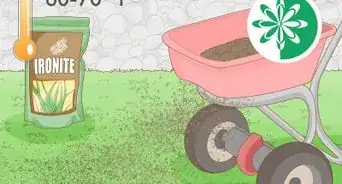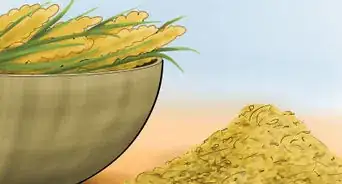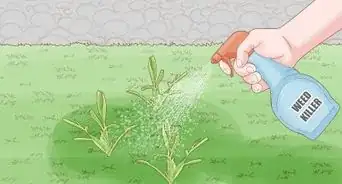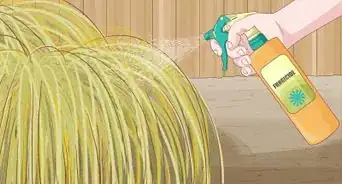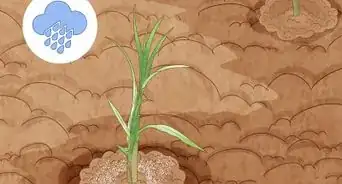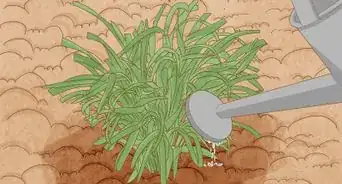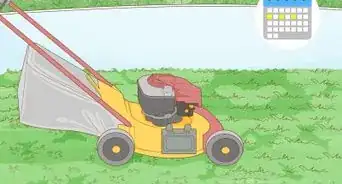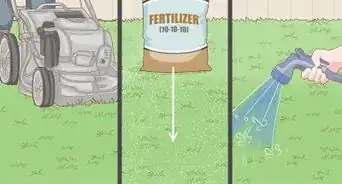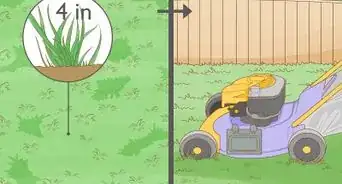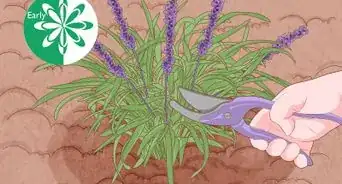This article was co-authored by Lauren Kurtz. Lauren Kurtz is a Naturalist and Horticultural Specialist. Lauren has worked for Aurora, Colorado managing the Water-Wise Garden at Aurora Municipal Center for the Water Conservation Department. She earned a BA in Environmental and Sustainability Studies from Western Michigan University in 2014.
There are 12 references cited in this article, which can be found at the bottom of the page.
This article has been viewed 85,771 times.
Bermuda grass is a lush, green grass that's popular in hotter climates. If you're looking to fill your yard with a traffic tolerant type of grass, Bermuda is a great option. If you prepare the area properly and follow the correct techniques, you can plant Bermuda grass seeds or sod that will thrive in your yard.[1]
Steps
Preparing the Location for Bermuda Grass
-
1Make sure that you live in the right climate. Bermuda grass excels in sub-tropical climates such as the Southern US, South America, Australia, Africa, and India. If you live in a northern region or an area that's prone to freezing temperatures or droughts, consider using a different grass type.[2]
- There are also more expensive Bermuda grass hybrids that are more resilient to cold.
-
2Till the area until it's free of weeds and patches of grass. Rent or purchase a tilling machine online or at a hardware store. Roll the tiller over your lawn and lift up existing grass and weeds. This will allow you to plant your Bermuda grass without it having to compete with other grass or weeds in your yard.[3]
- If you can't get a mechanical tiller machine, you can use a manual tiller to till the soil.
- If you have ryegrass in your lawn, you'll have to kill it off because it contains toxins that stop Bermuda grass from growing.[4]
- You may have to till the soil more than once to remove any baby grass that starts to sprout after you till the yard initially.
Advertisement -
3Rake away the dead grass and weeds. Before you plant your Bermuda grass, you'll want to start with a fresh piece of land. After you've tilled the soil, you'll want to rake away dead grass and leaves so that you have a plot of land that doesn't have any new plant life growing out of the surface.[5]
-
4Test the soil in your yard. Bermuda grass grows best in soil with a pH of 5.6-7. To evaluate the pH level in your soil, you can get a sample of it tested at your local university's cooperative extension. If your soil is too acidic, you must add lime to amend the soil. If the soil is too alkaline, then you can amend the soil with sulfur to increase the acidity in the soil.[6]
-
5Amend the soil. Bermuda grass does best in well-drained soil that's high in organic material. Clay soils are not good for the grass. Humus is the generic term used for soil that's high in organic material. You can purchase humus at a home and gardening store or online. You'll want to lay down at least 6 inches of humus before you plant your seeds or lay your sod.[7]
Planting Bermuda Grass Seeds
-
1Rake over the area to even out the dirt. Use a rake to go over the area that you've tilled to level out the dirt. You'll want to get rid of depressions and hills in your lawn so that the seeds have a nice flat surface to grow on. Fill in any depressions with soil. Remove any large rocks or leftover organic material before laying down your seeds.[8]
-
2Plant the seeds. You can plant the seeds by hand, or you can purchase a broadcast seeder to help you evenly disperse the seeds on your lawn. You'll want to use 1 - 2 pounds (453.59 - 907.18 g) per 1000 square feet (304.8 square meters) to promote a lush yard. Go over the entirety of the soil and try to evenly distribute the seeds.[9]
-
3Cover the seeds with 1/4 inch of soil. Use a rake to go over the seeds and cover them with soil. Bermuda grass needs to be covered in soil to grow, but too much soil over your seeds will inhibit growth. All of the seeds should be lightly covered with a 1/8 to 1/4 inch (0.31 - 0.63 cm) layer over them.[10]
-
4Water the seeds. Immediately after planting the grass, you should thoroughly water your yard so that the soil remains moist. Afterward, continue watering the yard daily. After watering the lawn, stick your finger in the soil to see if the top half inch (1.27 cm) of the soil is moist.[11]
- While Bermuda grass is a drought-tolerant grass, it requires a lot of water at first for the seeds to germinate. Keep the soil consistently moist for the first three weeks that the seeds are in the ground. Gradually decrease waterings as the turf matures.
-
5Apply fertilizer to the grass. If you haven't done a soil test to evaluate the surrounding soil, you can lay down a complete (N-P-K) turf-grade fertilizer with a 3-1-2 or 4-1-2 ratio. Purchase the fertilizer online or at a hardware store, then sprinkle it over your lawn. Bermuda grass will take 10-30 days to germinate under ideal conditions.[12]
Planting Bermuda Grass Sod
-
1Measure the area where you want to plant the sod. Sod is grass that's been pre-grown and can be rolled out on existing dirt. Before laying your sod, you'll need to know how much square footage of sod you'll need. Use a tape measure to measure your lawn and deduct areas where grass won't grow, like driveways or blacktops.[13]
-
2Water your yard the night before. Irrigating your lawn with 1/4 to 1/2 inch (0.63 - 1.27 cm) of water the night before you plant your sod will prepare the area and will promote the healthy growth of your Bermuda grass. Water should not pool on top of the dirt, but it should penetrate into it.[14]
- If water pools on the surface of the dirt, it means you've watered it too much or that your soil contains too much clay. Add compost to the soil and till it in.
-
3Roll out your sod on the longest straight edge of your lawn. Find the longest straight edge of your lawn and begin to lay down the sod. Roll out the sod, dirt side down and continue to push it until it's flattened out. Continue to lay down the sod, edge to edge, until the lawn is completely covered.[15]
-
4Use a shovel to trim the sod around obstructions. If you come across an area where the sod doesn't fit, like a driveway or fountain, you can use a shovel to trim around the sides.[16]
-
5Lay out the rest of the sod. Continue to lay out the sod in rows so that each row of sod touches the next. If you lay your sod rows too far apart, there will be holes in your lawn.[17]
-
6Water your sod daily. Immediately after laying out all the sod, you'll want to water it thoroughly. Then, to maintain it, you should continue to water it every day in the morning. Keep foot traffic off the sod for at least a week after laying it to promote the health of your grass.
- If you water sod evening, it will be more prone to fungal infections during the night.
Expert Q&A
Did you know you can get expert answers for this article?
Unlock expert answers by supporting wikiHow
-
QuestionWhat is the best time to plant Bermuda grass seed?
 Maggie MoranMaggie Moran is a Professional Gardener in Pennsylvania.
Maggie MoranMaggie Moran is a Professional Gardener in Pennsylvania.
Home & Garden Specialist
-
QuestionHow do I get my Bermuda grass to spread?
 Maggie MoranMaggie Moran is a Professional Gardener in Pennsylvania.
Maggie MoranMaggie Moran is a Professional Gardener in Pennsylvania.
Home & Garden Specialist
-
QuestionHow long does it take for Bermuda grass seed to germinate?
 Maggie MoranMaggie Moran is a Professional Gardener in Pennsylvania.
Maggie MoranMaggie Moran is a Professional Gardener in Pennsylvania.
Home & Garden Specialist
Things You'll Need
- Till
- Rake
- Humus or soil high in organic material
- Bermuda grass seeds or sod
- Water
- Measuring tape
- Shovel
References
- ↑ http://bermudagrass.com/
- ↑ https://www.bermuda-attractions.com/bermuda_0000ee.htm
- ↑ https://www.familyhandyman.com/landscaping/lawn-care/lawns-how-to-reseed/view-all
- ↑ http://bermudagrass.com/info/seeding-lawns.html#.WU6Z5Gjyvcc
- ↑ https://www.familyhandyman.com/landscaping/lawn-care/lawns-how-to-reseed/view-all
- ↑ http://lawnfertilizers.com/info/lime-sulphur.html
- ↑ http://www.outsidepride.com/seed/grass-seed/bermuda-grass-seed/planting.html
- ↑ http://bermudagrass.com/seeding/index.html#TILLING
- ↑ http://www.walterreeves.com/lawn-care/bermuda-planting-seed/
- ↑ http://bermudagrass.com/seeding/index.html#TILLING
- ↑ http://www.sierravistagrowers.net/sod/bermuda-grass-seed
- ↑ http://www.sierravistagrowers.net/sod/bermuda-grass-seed
- ↑ https://www.supersod.com/diy/how-to-lay-sod-video.html
- ↑ http://www.walterreeves.com/lawn-care/bermuda-planting-sod/
- ↑ http://www.walterreeves.com/lawn-care/bermuda-planting-sod/
- ↑ http://www.walterreeves.com/lawn-care/bermuda-planting-sod/
- ↑ https://www.thisoldhouse.com/ideas/how-to-lay-sod
About This Article
Bermuda grass is a lush, green grass that can brighten up your lawn. It grows best in sub-tropical climates, like the southern U.S., South America, and Australia. Before you plant Bermuda grass, get rid of any weeds and other grasses from the soil so it won’t be competing for nutrients. You’ll also want to rake your soil to make sure there are no hills or depressions. You can sow your seeds by hand or with a broadcast seeder. Just make sure they’re evenly dispersed across the lawn. After you’ve spread the seeds, cover them with ¼ inch soil. Keep the soil watered so the top ½ inch is moist. You should also apply a turf-grade fertilizer to provide extra nutrients. Bermuda grass generally takes 10 to 30 days to germinate. For more tips from our Gardening co-author, including how to plant Bermuda grass sod, read on!
